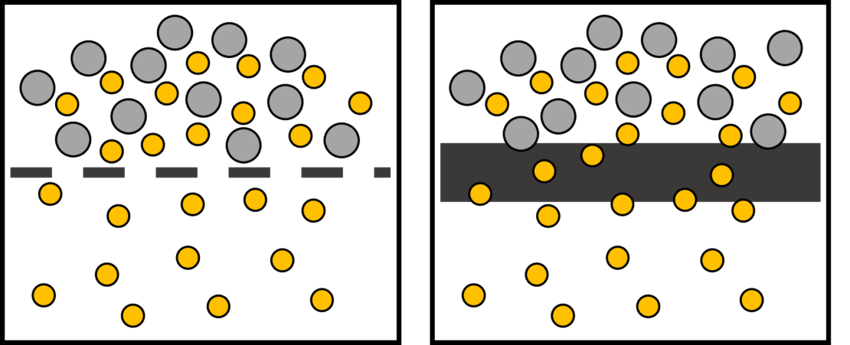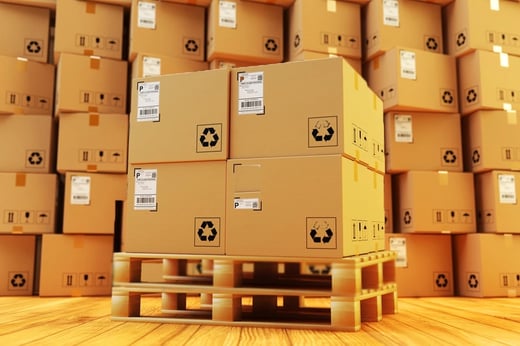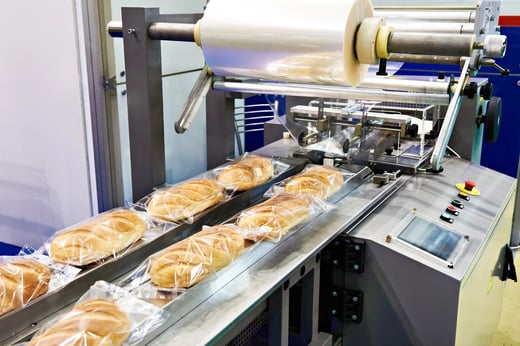
What could a carbon removal system of the future look like?
March 2022
By Tim Hartley, Consultant at 42T

Carbon capture is a process which extracts carbon dioxide from a gas source such as the air around us or a fossil fuel combustion exhaust to prevent it causing climate change.
Despite its relative infancy, it is still one of the key features of the UK government’s plan to achieve net zero with 9% of emissions expected to be offset by this technology by 2050.
One interesting avenue for this type of environmental engineering technology, is membrane carbon capture. This form of capture is modular and much easier to deploy at different scales at competitive costs. Improvements are currently being made to bring these to commercial viability on a larger scale. This article examines the potential of this technology, explaining how it works, and why it's suitable for a wide variety of applications.
What is carbon capture?
There are three main categories of carbon capture based on the point which they happen: pre-combustion, during combustion and post-combustion.
- Pre-combustion carbon capture removes the carbon from the fuel, converting it to hydrogen which is then used instead
- Carbon capture during combustion involves the combustion of the fuel either in pure oxygen or using a metal oxide so that the exhaust gas is close to pure carbon dioxide and water, making the exhaust components easy to separate
- Post-combustion removes carbon dioxide from a mixed gas source, preventing it from reaching the atmosphere
Of the three types of carbon capture, post-combustion has gained much of the publicity and interest. This is largely due to its ability to be retrofitted to current processes, reducing the level of change required to meet climate targets. It has now begun to be adopted within some industries at a commercial level.
Post-combustion carbon capture
Once the carbon is removed at any point in the system, it is then compressed and transported for use in another process or sequestration. Selling the captured carbon on for use in another process such as in greenhouses, drinks carbonation or other industries provides a reimbursement for the cost of capturing. Sequestration removes it from the system more permanently than use, often placing the CO2 in geological formations under pressure to prevent its climate change effects.
 Direct air capture facility. Photo courtesy Carbon Engineering Ltd, Canada
Direct air capture facility. Photo courtesy Carbon Engineering Ltd, Canada
There are two main areas where post-combustion carbon capture has been deployed – removal at emissions source and direct air capture. Removal at the emissions source removes carbon dioxide from an exhaust where the concentration is highest and therefore requires less effort, whereas direct air capture removes the carbon dioxide by filtering large quantities of air but can be placed wherever is convenient.
Both approaches use similar technologies and have separate advantages and disadvantages. Removal of emissions at source requires a smaller amount of energy per kg of carbon dioxide but requires space to house the processing equipment locally. Direct air capture is the inverse, with large, centralised removal of carbon dioxide, but at a high cost.
Carbon capture technology - options
There are several key technologies for carbon capture:
- Absorption – A chemical, usually an amine solution, reacts with the carbon dioxide to strip it from the gas mix. The solution requires energy input, usually in the form of temperature and pressure to release the gas from the solution so it can be reused
- Adsorption – A process where the carbon dioxide adsorbs, or sticks, to the surface of a material where it can then be later released by the input of energy
- Membrane filtering – The exhaust gas is passed through a membrane where carbon dioxide is selectively filtered out of the gas stream
- Cryogenics – The solidification temperature of carbon dioxide is used to selectively filter it out of a gas stream
Of these technologies, membranes have great promise due to the modular nature of the membranes and their ease of scalability. In addition to this, the energy required to remove the carbon from the exhaust stream is relatively low compared to other conventional methods. Also, the capital cost of these modules, already relatively low, will likely reduce as volumes of production increase. Installation of this technology also does not require a high skill level and the membranes often do not require the complex system design that other forms of carbon capture methods require.
How does membrane technology work?
Membrane technology is relatively simple in principle. These are materials that selectively let through or prevent carbon dioxide passing to separate them from other gasses. There are various methods to accomplish this, such as having a membrane which lets through gasses below a certain size or through diffusion, where the target gas can preferentially move through the membrane layer. The key features of a membrane are the selectivity, (how well the membrane filters the carbon dioxide from the other gas) and the permeance (the amount of gas that the membrane can filter per unit time).
In order for the exhaust gas to pass the filter, there needs to be a pressure applied to the input of the membrane which is where the majority of the energy required for this process is used. Current membranes tested outside of a laboratory environment report a penalty of between 20% - 30% of the energy generated must be used for carbon capture. This is comparable to the energy penalty of amine-based absorption methods. As this technology improves, the pressure required decreases and the amount of gas that each membrane can filter increases, reducing both capital and operational costs further below other carbon capture technologies.
 Exhaust gasses passing through a partial size selecting membrane (L) and diffusion membrane (R)
Exhaust gasses passing through a partial size selecting membrane (L) and diffusion membrane (R)
Membrane technology already at work
One of the most well established and best performing membranes commercially available is the PolarisTM membrane. This has been tested at a power station running at the equivalent to 1MWe coal plant. Due to its high selectivity and permeance, this membrane is a competitive alternative to more typical amine absorption plants, with estimated costs for carbon at around $40 per tonne captured.
Where could membranes be applied?
Compared to other carbon capture technologies, membranes are better suited to deployment at different scales. In experimentation and initial deployment, membranes were placed in modules which could be combined to expand capacity. This feature makes them very attractive for industries whose production of carbon dioxide would not make it commercially viable to install an amine absorption plant or where the process has many exhaust points which would all need separate units. It also means that when demand increases modules can be mass produced and be applicable to many different applications provided the composition of the exhaust gas was known so that the correct filtering was applied to the mixture.
What are the downsides?
Membrane technology is still in development and has not reached the commercial stage where it is widely available. In addition to this, many industries are not yet faced with aggressive carbon pricing and there is not much financial incentive to invest in carbon mitigating technologies. However, this looks set to change in the near future as carbon targets become increasingly stricter.
One of the key downsides to these membranes is the materials that many are made from. Due to the reliance on polymers, the flue gasses must be below 100 degrees Celsius, potentially limiting the applications, or increasing the energy demand by adding active cooling.
What happens after carbon is captured?
Whilst there are methods that exist for storing this gas long term in minerals and geological formations, more research and development needs to be conducted on both the methods for achieving this on a larger scale and to better understand what potential formations would be suitable with minimal leakages.
There are also significant infrastructure changes that would need to happen before a large-scale shift to carbon capture technologies such as methods for transporting the carbon to suitable sites from the point of capture, can occur.
.jpg?width=760&height=507&name=pexels-cottonbro-9862516%20(2).jpg)
Where to from here?
Despite their relative infancy, membranes have already demonstrated exciting properties that could aid carbon capture to become more widespread across a range of industries and applications.
Whilst they are not a fully green technology such as hydrogen has the potential to be, they may be the stepping-stone between a fully green future and the current fossil fuel based economy.
If your company is interested in transitioning towards carbon saving technologies but is unsure of how to proceed, then engineering consultants could be the key as they have been tackling these kinds of challenges since before climate change came under the spotlight.
Many carbon saving technologies already exist and can be modified or applied in new applications alongside an innovation partner who understands the challenges facing your industry. In the process, companies are not only able to make a difference to the planet, but could also save on costs in the long term or sometimes discover a new source of revenue.
Sources:
https://www.osti.gov/servlets/purl/1015458-INdTMC/
https://www.mdpi.com/2077-0375/10/11/365/pdf
https://www.frontiersin.org/articles/10.3389/fclim.2019.00009/full
https://carbonengineering.com/

tim.hartley@42T.com | +44 (0)1480 302700 | www.linkedin.com/in/tim-hartley
Tim is a consultant at 42 Technology with experience in conceptual design, development, testing and prototyping. He has worked on many different products from a range of industries, from surgical devices to food and beverage handling systems, drawing in knowledge from other sectors to achieve client goals.
Share this article:
Related Articles

Sustainability, Industrial
EU packaging waste regulations are a significant opportunity

Sustainability, Product Design
The Eco-design Directive for sustainable products - are product owners ready?

Consumer, Sustainability
Supporting the transition to sustainable packaging materials and heat sealing challenges

What will you ask us today?
We believe in asking the right questions to drive innovation; when we know the right questions, we generate the ideas to answer them.

